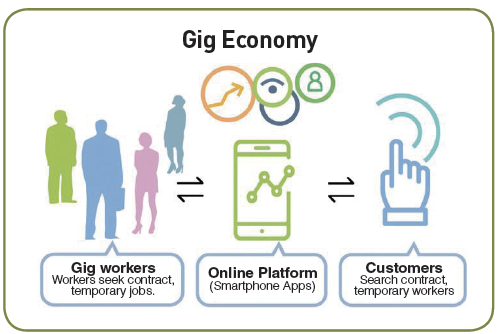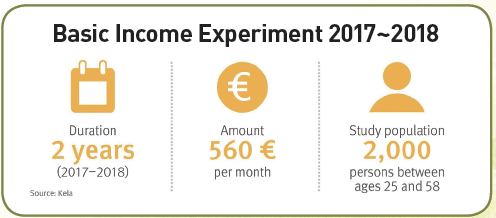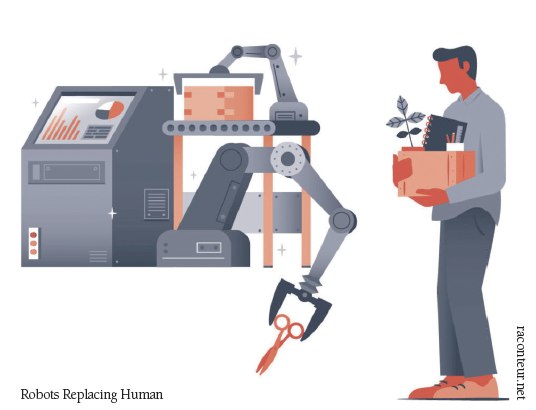Many countries are considering basic income as an alternative to overcoming economic hardships due to the novel coronavirus (COVID-19) crisis. Unlike the original basic income, disaster-related basic income is paid temporarily, but the two are common in that both have the universality, which means they are paid indiscriminately to all Korean citizens. Discussions on basic income continue because of concerns about job losses due to automation caused by the fourth industrial revolution as well as disaster situations. Thus, the Sungkyun Times (SKT) explains the concept of the basic income and investigates the pros and cons, as well as its future direction.
What is Basic Income?
The Concept of Basic Income
Basic income is a system where the government gives money to all Korean citizens regardless of whether they have property or income, and whether they are working or not. According to the Basic Income Earth Network (BIEN), basic income has the following five characteristics.
1. Periodic: it is paid at regular intervals (for example every month), not as a one-off grant
2. Cash payment: it is paid in an appropriate medium of exchange, allowing those who receive it to decide what they spend it on. It is not, therefore, paid either in kind (such as food or services) or in vouchers dedicated to a specific use.
3. Individual: it is paid on an individual basis- and not, for instance, to households.
4. Universal: it is paid to all, without means testing.
5. Unconditional: it is paid without a requirement to work or to demonstrate a willingness to work. There are diverse opinions on the basic income model depending on academic circles, and usually, the universality and unconditionality are emphasized.
Background of Basic Income Discussion
The basic income is actively being discussed because the form of labor is expected to change in the long term along with a rapid decrease in jobs due to technological advances.
1. Replacing Humans with Robots
The prospect that artificial intelligence (AI) will replace humans, represented by the competition between Lee Sedol and AlphaGo, has already become a reality. Machines such as AI and robots can do human work more accurately, faster, and at a lower cost than humans. In 2015, Adidas shut down its low-wage Southeast Asian factory and began to operate a smart factory in Germany that excluded human hands as much as possible. Its production speed was reduced by three times, but mass production was still premature. So, Adidas chose to go back to Southeast Asia in 2019, but they can try again any time after supplementation. Re-educating workers can create jobs in new fields. However, while the workers kicked out are simple functional workers, new jobs in the high-tech field require high levels of expertise.
2. Job Insecurity
The spread of the gig economy has collapsed the traditional payment system and is spreading the instant payment system in which workers immediately earn their income in cash. The gig economy is the form of economy where people temporarily contract and hire workers whenever customers need them. In 2015, McKinsey Consulting defined the gig economy as short-term work traded in digital markets. Freelancers through platforms such as Uber taxi drivers, Coupangman, and delivery app workers are typical. The trend is expanding throughout life, including taxis, food delivery, and accommodations. As these new jobs are likely to become extremely unstable and irregular employment, the need for a basic income is assertive to overcome income instability.

Basic Incomes Around the World
Many countries across Europe, North America, and Asia continue to experiment and discuss the basic income. Finland, in particular, drew international attention because it formed experimental and control groups and observed policy effects for two years from 2017. The government provided a basic income of 560 euros (about 710,000 won) per month to 2,000 people who were assigned to the experimental group and paid existing unemployment benefits to those included in the control group. The amount of unemployment benefits and basic income is similar, but the experimental group is exempted from reporting job search activities to receive unemployment benefits, and basic income does not reduce even if income arises due to economic activities. The results of the two-year experiment showed no significant difference in employment effects compared to unemployment benefit recipients, but the preliminary results show increased happiness of the experimental group. However, there is a limitation because most experiments were conducted during a limited period, with a small number of people and prepared funds.

Pros and Cons on Basic Income
Pros
1. The Complement to Selective Welfare
The basic income is universal welfare, which is unconditionally paid to anyone, so that, it can eliminate blind spots in selective welfare. Basic livelihood security recipients can receive benefits only when they apply for their own or a neighbor’s application, so they are in a blind spot if they cannot apply directly or are disconnected from society. In some cases, they cannot receive benefits because they have an estate in the countryside or have a monthly rent deposit. Also, selective welfare generates a stigma effect in the selection process. For example, early children’s meal cards for low-income families were made with a special design so a third person could notice them, giving social stigma to children. Proof of poverty to receive benefits can cause shame and deprivation in the process. According to Korean People’s Solidarity Against Poverty and the Korea Center for City and Environment Research in 2019, a basic livelihood security recipient said that he felt suspicious and unrespectful in a visitor interview due to repeated questions such as the reason for poverty and the path to becoming poor, regardless of the selection process.
2. The Solution to Future Anxiety
Just as happiness has risen in Finland’s experiment, relieving anxiety will affect individual happiness and health. Finland’s experiment shows that the average score of the experimental group on satisfaction in life was 7.32 out of 10, significantly higher than 6.76 of the control group. When asked about confidence in one’s future, confidence in one’s financial situation, and the ability to influence social issues, the experimental group was much stronger than the control group. Also, the basic income can be a safeguard that makes people achieve self-realization. A participant in Finland’s experiment said, “For two years, I’ve been able to focus on writing and publish two books” and, “Basic income makes people more creative and productive.” Another participant said, “Basic income seems to bring positive effects on mental health” and, “I was able to start my own business because I had a safeguard of 560 euros a month.” Also, basic income weakens the power of capitalists in labor relations because it frees workers from wages. As a result, it can protect the worker’s rights much more.

Cons
1. Large Tax Increase
The most critical problem is how to afford the money for the basic income. Assuming that basic income is paid monthly to 50 million people, at one million won per person, then around 600 trillion won is required annually. Considering that Korea’s annual budget is currently around 450-500 trillion won, the government needs 100 trillion won more even if they do nothing and spend only on welfare. Practically speaking, enough basic income to live a basic life is impossible. Many experts offer around 300,000 won per person per month in the beginning. Assuming the population of Korea is 50 million, then approximately 180 trillion won a year is required. A ratio amount of taxes, 20% in 2018, and total tax revenue, 26.8% in 2018, should be raised to 35%, which is the OECD average. Then the government can secure nearly 170 trillion won, 300,000 won per person for basic income. In such a situation where enough level of basic income is impossible, providing a limited or low-level basic income may not achieve the original goals.
2. Needlessness of Basic Income
Opponents insist that proponents of basic income are overly pessimistic about the problems of future job losses and instability and welfare blind spots. Yang Jae-jin, a professor of Public Administration at Yonsei University, says that the existing social security system is cost-effective, unlike basic income. This is because the existing social security system provides universal guarantees for social risks such as unemployment, disease, and retirement, but only selective rewards when people fall into the risk of losing jobs or increasing spending. For example, for job losses during the transitional period caused by the fourth industrial revolution, it is more effective to deal with the existing social security systems such as reduction of working hours, job sharing, job training, and employment services than basic income. In other words, expanding and strengthening the existing social security system is a priority for solving problems in our society, not a basic income.
Future of Korean Basic Income
Critics on basic income say that it costs a lot. Once finances are secured, however, it can be used to strengthen existing welfare also. Basic income is in the preparation stage. Society needs to plan welfare programs looking further to the future.
Attempt Possible Experiment
Like Finland’s experiment, the employment effect by basic income is slight, but positive results on happiness and health show that an experiment with basic income is worth trying in Korea. Korea also needs to verify the validity of the basic income through experiments and discussions. If the basic income experiment has meaningful results, it can provide evidence and lead to a national consensus. Experiments can help assess various basic income models. For example, basic income can be limited to specific life cycles like youth allowances in Gyeonggi Province. The Seoul Institute, a think tank of Seoul Special City, and LAB2050, a private think tank, have proposed a Youth Allowance 2.0 Policy Experiment to Seoul in 2019. Society needs to publicize basic income as one of the many ways to prepare for a new era.
Find New Source of Taxation
Finding a new tax source to implement the basic income budgets can avoid imposing excessive tax burdens on people. Google Tax and Robot Tax have been actively discussed in recent years. Google Tax, a so-called digital tax, is a tax on IT companies that make profits by using big data instead of a labor force. Because some IT companies make profits based on big data, they should not just monopolize it, but share it with everyone. Although it was rejected, Europe voted in 2019 to impose a three percent tax on sales to companies such as Google and Facebook. Public opinion is also raised in Korea because Google, which earned 5 trillion won, paid only 20 billion won in taxes. Additionally, Robot Tax is a tax imposed on the economic value produced by robots. Robot Tax is presented as resources for various policies that can offset the side effects of the fourth industrial revolution, such as job losses and reduced consumption. However, it faces concerns that the burden of the robot tax will undermine the development and innovation of the robot industry.

As the imagined future is getting closer, we should prepare for it. There are still diverse arguments over which is a better system, but it is clear that the basic income is a system worth discussing, not an unrealistic one. The SKT expects more realistic basic income through enough experiments and consensus.
